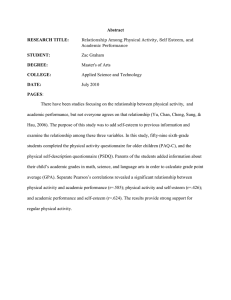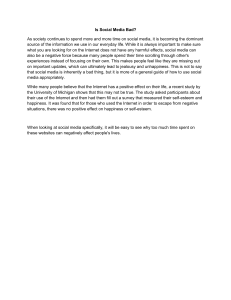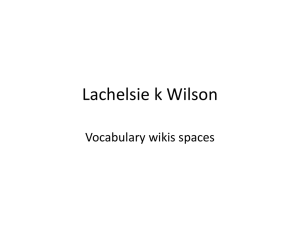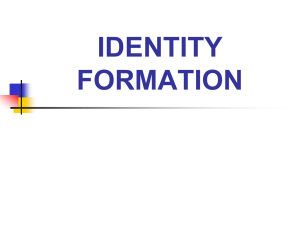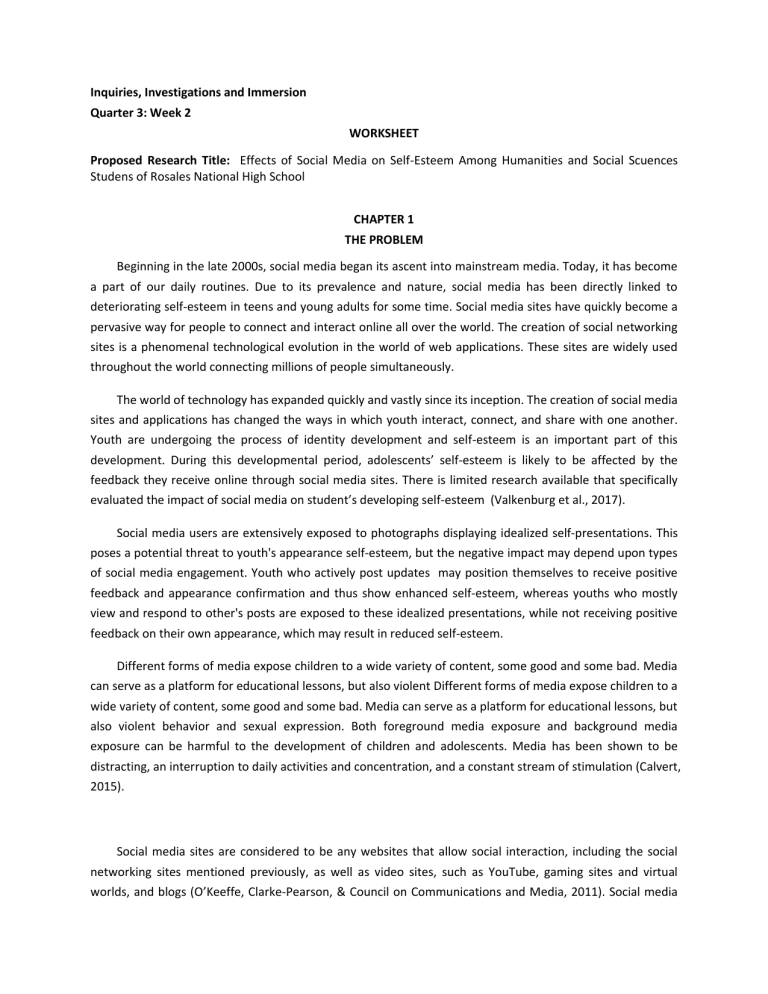
Inquiries, Investigations and Immersion Quarter 3: Week 2 WORKSHEET Proposed Research Title: Effects of Social Media on Self-Esteem Among Humanities and Social Scuences Studens of Rosales National High School CHAPTER 1 THE PROBLEM Beginning in the late 2000s, social media began its ascent into mainstream media. Today, it has become a part of our daily routines. Due to its prevalence and nature, social media has been directly linked to deteriorating self-esteem in teens and young adults for some time. Social media sites have quickly become a pervasive way for people to connect and interact online all over the world. The creation of social networking sites is a phenomenal technological evolution in the world of web applications. These sites are widely used throughout the world connecting millions of people simultaneously. The world of technology has expanded quickly and vastly since its inception. The creation of social media sites and applications has changed the ways in which youth interact, connect, and share with one another. Youth are undergoing the process of identity development and self-esteem is an important part of this development. During this developmental period, adolescents’ self-esteem is likely to be affected by the feedback they receive online through social media sites. There is limited research available that specifically evaluated the impact of social media on student’s developing self-esteem (Valkenburg et al., 2017). Social media users are extensively exposed to photographs displaying idealized self-presentations. This poses a potential threat to youth's appearance self-esteem, but the negative impact may depend upon types of social media engagement. Youth who actively post updates may position themselves to receive positive feedback and appearance confirmation and thus show enhanced self-esteem, whereas youths who mostly view and respond to other's posts are exposed to these idealized presentations, while not receiving positive feedback on their own appearance, which may result in reduced self-esteem. Different forms of media expose children to a wide variety of content, some good and some bad. Media can serve as a platform for educational lessons, but also violent Different forms of media expose children to a wide variety of content, some good and some bad. Media can serve as a platform for educational lessons, but also violent behavior and sexual expression. Both foreground media exposure and background media exposure can be harmful to the development of children and adolescents. Media has been shown to be distracting, an interruption to daily activities and concentration, and a constant stream of stimulation (Calvert, 2015). Social media sites are considered to be any websites that allow social interaction, including the social networking sites mentioned previously, as well as video sites, such as YouTube, gaming sites and virtual worlds, and blogs (O’Keeffe, Clarke-Pearson, & Council on Communications and Media, 2011). Social media sites enable individuals to create personal electronic profiles. These sites allow users to leave residues of their presence to others on the site through posts, friends lists, and being a part of specific groups, as well as to make observations of others’ lives. (Calvert, 2015). Sources: https://www.sciencedirect.com/science/article/pii/S0747563220302806

